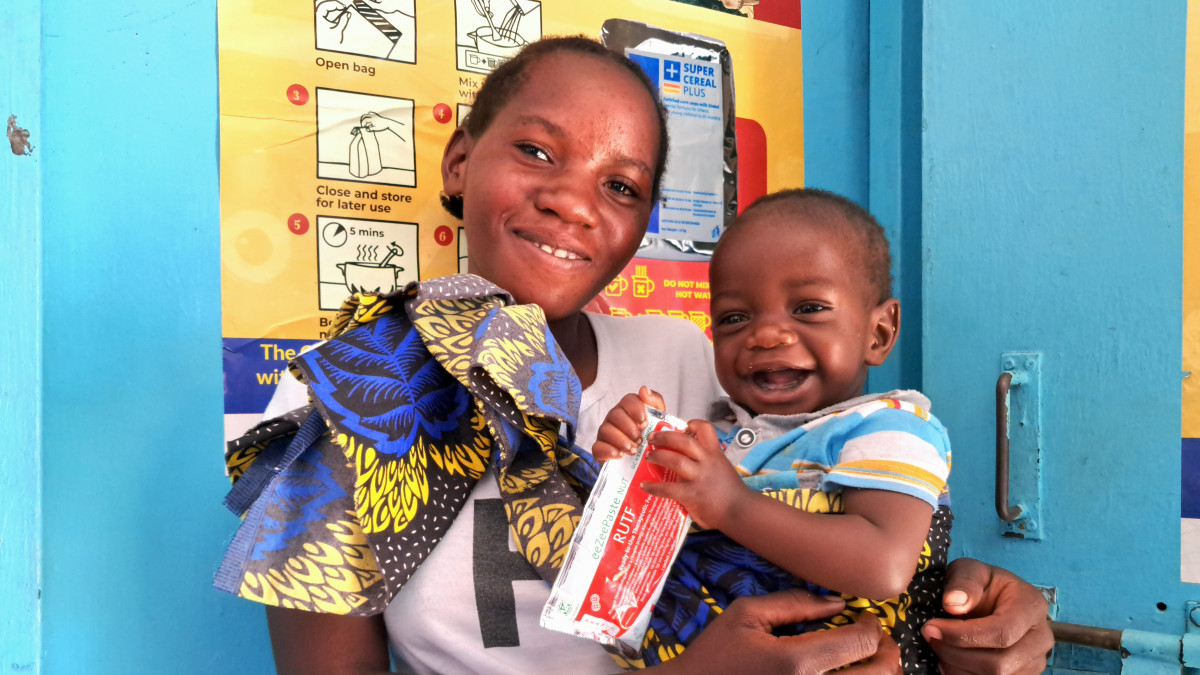From drought to hope: How nutrition support is rebuilding lives in Zambia
Published: Jul 29, 2025 Reading time: 4 minutes Share: Share an articleFollowing Zambia's worst drought in decades,6.6 million people were in need of urgent humanitarian aid. Western Province had endured a surge in malnutrition cases, particularly among children and lactating mothers. In response, our Nutrition Emergency Response Project has treated thousands of children for acute malnutrition and trained hundreds of local health workers and community volunteers. Furthermore, it is providing sustainable agricultural support to help families recover and thrive.

“I thought my child would not survive, but my son, Kalaluka, is healthy again,” says Makula Muleta from Nalalo District in Zambia’s Western Province. Kalaluka was identified and diagnosed with acute malnutrition during Zambia’s worst drought in decades, and Muleta feared the worst. But thanks to our year-long emergency nutrition response, Kalaluka has recovered and is now back in school.
The fear of losing a child was not limited to Muleta; it was daily reality for many families across Zambia. More than 6.6 million people needed immediate humanitarian assistance following the severe 2023/2024 drought that hit several countries in southern Africa; this drought was worsened by the El Niño Southern Oscillation.
In Zambia, the drought led to significant crop losses, livestock deaths, and worsened poverty for rural communities. These crises caused a surge in malnutrition cases among lactating mothers and children.
At People in Need, we responded by launching the Nutrition Emergency Response Project in partnership with the Ministry of Health, and with funding from UNICEF. This rapid, year-long intervention, coordinated a package of screening, treatment, capacity building, and agricultural support across six of the most drought-affected districts in Western Province.
Treatment where it’s needed most
Malnutrition continues to be a global threat, impacting billions of people around the world. It is often hard to detect, with symptoms not always visible, as it weakens the immune system. Children are particularly vulnerable with the most dangerous effects usually occurring in the first 1,000 days of life; if proper nutrients are lacking, the result can be irreversible brain damage. In communities where food is scarce and health services are hard to reach, early intervention can mean the difference between survival or death.
Over the past year, we trained 295 health workers and 1,534 Community-Based Volunteers (CBVs) on identifying, referral, and treatment of acute malnutrition. Equipped with resources and knowledge, Community-Based Volunteers went door-to-door for screenings, referred families to the nearest health facilities, and helped follow up on children receiving care.
CBVs and local health workers help to build trust and confidence in the products, especially for areas that might otherwise be ignored.
The key achievements of Nutrition Emergency Response Project include:
• 96,101 children under five screened for malnutrition
• 844 children treated for Severe Acute Malnutrition (SAM)
• 4,223 children treated for Moderate Acute Malnutrition (MAM)
• 5,976 pregnant and breastfeeding women received Multiple Micronutrient Supplements (MMS)
• 10,375 children received fortified blended food (CSB++)
• 13,944 children were supported with Multiple Nutrient Powders (MNPs)
o 25 tonnes of High Energy Protein Supplement (HEPS) in Sioma and Nalolo districts
By combining local knowledge, hands-on education, and active case finding, CBVs and health workers reached even the most remote families and introduced sustainable practices that can be replicated in other districts.
Growing Strength: When Food Becomes Medicine
When food is scarce, survival is uncertain. In Western Zambia’s many families were left with little to no food after the drought. To support their recovery, we—along with the Ministry of Foreign Affairs of the Czech Republic—provided 336 families in both districts with seeds such as beans and millet to reduce the risk of future malnutrition and boost household food production.
Simenda Mooyo, a new mother who was malnourished at the time, received nutrition supplements, along with the resources to grow her own food from her garden. Today, her family’s bean harvest is doing more than filling plates.
By tying nutrition to sustainable livelihoods, the programme provides families with both short-term assistance and long-term resilience and creating a buffer against future crises.
What comes next
Now that the foundations are in place and the project winds down, local government and communities have an opportunity to turn these interventions into something more. Through partnerships and community-driven action, Zambia’s Western Province is turning the tide on malnutrition, laying the groundwork for a healthier and better future for all children.



